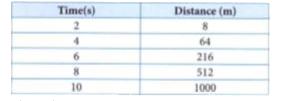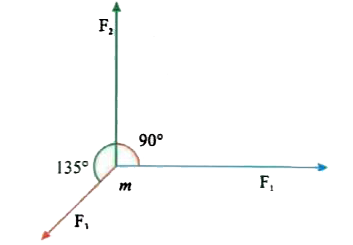Three forces act on a body. The body will certainly have an acceleration of these are:
7N, 8N, 14N
10 N, 4N, 12N
3N, 15N, 8N
2N, 6N, 7N
The correct Answer is:C
When resultant is greater than arithmatic sum of any two.
Topper's Solved these Questions
- VECTORSBOOK - GRB PUBLICATIONCHAPTER - VECTORSEXERCISE - MORE THAN ONE CHOICE IS CORRECT
15 Videos
- VECTORSBOOK - GRB PUBLICATIONCHAPTER - VECTORSEXERCISE - ASSERTION- REASON
1 Videos
- VECTORSBOOK - GRB PUBLICATIONCHAPTER - VECTORSEXERCISE - PROBLEMS FOR PARCTICE
23 Videos
- UNITS AND DIMENSIONSBOOK - GRB PUBLICATIONCHAPTER - UNITS AND DIMENSIONSEXERCISE - Link Compression
6 Videos
Similar Questions
Knowledge Check
A force is acting on a body. The body will move with
Auniform velocity,Buniform accelerationCuniform retardation,DNone of these.An unbalanced force acts on a body. The body
Amust remain at restBmust move with uniform velocityCmust be acceleratedDmust move along a circleWhen a force of 1N acts on a body of mass 1 gram, the body receives an acceleration of
A1ms−2B9.8ms−2C980ms−2D1000ms−2
When a body is moving uniformly along a straight line and there is no force of friction, acceleration/retardation of the body. According to Newton's second law of motion, the magnitude of force acting on a body is the product of mass and acceleration of the body
The distance - time table of an object in motion is given below

The force acting on the object
View SolutionIf no force acts on a body, it will
View SolutionWhen a body is moving uniformly along a straight line and there is no force of friction, acceleration/retardation of the body. According to Newton's second law of motion, the magnitude of force acting on a body is the product of mass and acceleration of the body
The distance - time table of an object in motion is given below

In the given table, acceleration of the object is
View Solutionif a number of force act on a body and the body is in state or dynamic force equalibrium , then .
View SolutionWhen a force F acts on a body of mass m, the acceleration produced in the body is a. If three equal forces F1=F2=F3=F act on the same body as shown in figure the acceleration produced is

View Solution
